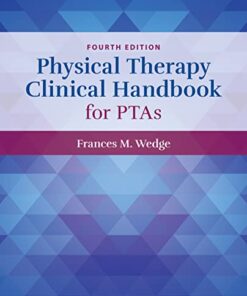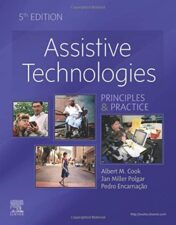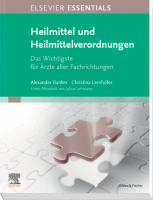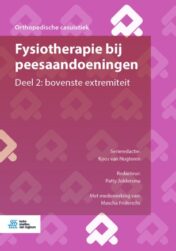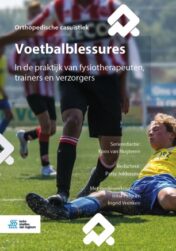- Paperback: 566 pages
- Publisher: Churchill Livingstone; 1 edition (April 25, 2012)
- Language: English
- Type : PDF ORIGINAL
- ==========================+======================
-
Note : We will send ebook download link after confirmation of payment via paypal success
Payment methods: Visa or master card (Paypal)
Fascia: The Tensional Network of the Human Body: The science and clinical applications in manual and movement therapy, 1e 1st Edition
$10
by Robert Schleip
- Reflects the efforts of almost 100 scientists and clinicians from throughout the world
- Offers comprehensive coverage ranging from anatomy and physiology, clinical conditions and associated therapies, to recently developed research techniques
- Explores the role of fascia as a bodywide communication system
- Presents the latest information available on myofascial force transmission which helps establish a scientific basis for given clinical experiences
- Explores the importance of fascia as a sensory organ – for example, its important proprioceptive and nociceptive functions which have implications for the generation of low back pain
- Describes new imaging methods which confirm the connectivity of organs and tissues
- Designed to organize relevant information for professionals involved in the therapeutic manipulation of the body’s connective tissue matrix (fascia) as well as for scientists involved in basic science research
- Reflects the increasing need for information about the properties of fascia, particularly for osteopaths, massage therapists, physiotherapists and other complementary health care professionals
- Offers new insights on the fascial related foundations of Traditional Chinese Medicine Meridians and the fascial effects of acupuncture
Fascia: The Tensional Network of the Human Body: The science and clinical applications in manual and movement therapy, 1e 1st Edition
Compiled by experts of international renown, Fascia: The Tensional Network of the Human Body brings together very different contributors who share the desire to bridge the gap between theory and practice as much as possible in our current knowledge of the human fascia. With contributions from over 100 specialists and researchers from throughout the world, this new volume will be ideal for all professionals who have an interest in fascia and human movement – physiotherapists, osteopathic physicians and osteopaths, chiropractors, structural integration practitioners, manual therapists, massage therapists, acupuncturists, yoga or Pilates instructors, exercise scientists and personal trainers – as well as physicians involved with musculoskeletal medicine, pain management and rehabilitation, and basic scientists working in the field.
Product Details |
Related Products
PHYSICAL MEDICINE & REHABILITATION BOOKS
Fisioterapia en procesos oncológicos y quirúrgicos de cabeza y cuello (Original PDF from Publisher)
PHYSICAL MEDICINE & REHABILITATION BOOKS
Toutes les clés pour réussir en STAPS. Mention « Éducation Motricité » (Original PDF from Publisher)
PHYSICAL MEDICINE & REHABILITATION BOOKS
PHYSICAL MEDICINE & REHABILITATION BOOKS
Médecine du ski: Pratiques, recommandations, prévention (Original PDF from Publisher)
PHYSICAL MEDICINE & REHABILITATION BOOKS
Soins primaires en kinésithérapie (Original PDF from Publisher)
PHYSICAL MEDICINE & REHABILITATION BOOKS
Whittle’s Gait Analysis, 6th edition (Original PDF from Publisher)
PHYSICAL MEDICINE & REHABILITATION BOOKS
Physiotherapy for the Hip Joint (Original PDF from Publisher)
PHYSICAL MEDICINE & REHABILITATION BOOKS
PHYSICAL MEDICINE & REHABILITATION BOOKS
Oncology Rehabilitation: A Comprehensive Guidebook for Clinicians (Original PDF from Publisher)
PHYSICAL MEDICINE & REHABILITATION BOOKS
PHYSICAL MEDICINE & REHABILITATION BOOKS
Campbell’s Physical Therapy for Children, 6th edition (Original PDF from Publisher)
PHYSICAL MEDICINE & REHABILITATION BOOKS
Electroterapia práctica (2ª ed.): Avances en investigación clínica (Original PDF from Publisher)
PHYSICAL MEDICINE & REHABILITATION BOOKS
Foundations of Kinesiology, 2nd Edition (Original PDF from Publisher)
PHYSICAL MEDICINE & REHABILITATION BOOKS
Guide to Evidence-Based Physical Therapist Practice, 5th Edition (Original PDF from Publisher)
PHYSICAL MEDICINE & REHABILITATION BOOKS
Physical Therapy Clinical Handbook for PTAs, 4th Edition (Original PDF from Publisher)
PHYSICAL MEDICINE & REHABILITATION BOOKS
PHYSICAL MEDICINE & REHABILITATION BOOKS
PHYSICAL MEDICINE & REHABILITATION BOOKS
Fascial Manipulation ® for Internal Dysfunctions – Practical Part (Original PDF from Publisher)
PHYSICAL MEDICINE & REHABILITATION BOOKS
PHYSICAL MEDICINE & REHABILITATION BOOKS
Practical Evidence-Based Physiotherapy,3rd edition 2022 Original PDF
PHYSICAL MEDICINE & REHABILITATION BOOKS
PHYSICAL MEDICINE & REHABILITATION BOOKS
Therapeutic Agents for the Physical Therapist Assistant 2022 Original PDF
PHYSICAL MEDICINE & REHABILITATION BOOKS
PHYSICAL MEDICINE & REHABILITATION BOOKS
PHYSICAL MEDICINE & REHABILITATION BOOKS
PHYSICAL MEDICINE & REHABILITATION BOOKS
Hip and Knee Pain Disorders Integrating manual therapy and exercise 2022 Original pdf
PHYSICAL MEDICINE & REHABILITATION BOOKS
Kinetic Control Revised Edition The Management of Uncontrolled Movement 2020 Original pdf
PHYSICAL MEDICINE & REHABILITATION BOOKS
Goodman and Fuller’s Pathology: Implications for the Physical Therapist 5th Ed 2022 Original PDF
PHYSICAL MEDICINE & REHABILITATION BOOKS
PHYSICAL MEDICINE & REHABILITATION BOOKS
Analyzing Scoliosis: The Pilates Instructor’s Guide to Scoliosis 2019 Original PDF
PHYSICAL MEDICINE & REHABILITATION BOOKS
PHYSICAL MEDICINE & REHABILITATION BOOKS
PHYSICAL MEDICINE & REHABILITATION BOOKS
Ultrasonography for the Upper Limb Surgeon 2022 Original pdf+videos
PHYSICAL MEDICINE & REHABILITATION BOOKS
Clinical Guide to Musculoskeletal Medicine A Multidisciplinary Approach 2022 Original pdf
PHYSICAL MEDICINE & REHABILITATION BOOKS
Evidenzbasierte Elektrotherapie Theorie und Praxis 2022 Original pdf+videos
PHYSICAL MEDICINE & REHABILITATION BOOKS
Cerebral Palsy A Practical Guide for Rehabilitation Professionals 2022 Original pdf
PHYSICAL MEDICINE & REHABILITATION BOOKS
Fundamental Orthopedic Management for the Physical Therapist Assistant 2021 Original pdf
PHYSICAL MEDICINE & REHABILITATION BOOKS
PHYSICAL MEDICINE & REHABILITATION BOOKS
PHYSICAL MEDICINE & REHABILITATION BOOKS
A Practical Approach to Interdisciplinary Complex Rehabilitation 2022 EPUB & converted pdf
PHYSICAL MEDICINE & REHABILITATION BOOKS
PHYSICAL MEDICINE & REHABILITATION BOOKS
PHYSICAL MEDICINE & REHABILITATION BOOKS
Physical Therapist Assistant Examination Review and Test-Taking Skills 2022 Original PDF
PHYSICAL MEDICINE & REHABILITATION BOOKS
PHYSICAL MEDICINE & REHABILITATION BOOKS
Outcome-Based Massage: Across the Continuum of Care, 4th Edition 2022 EPUB + Converted PDF
PHYSICAL MEDICINE & REHABILITATION BOOKS
PHYSICAL MEDICINE & REHABILITATION BOOKS
Assistive Technologies: Principles and Practice, 5th edition 2020 Original PDF
PHYSICAL MEDICINE & REHABILITATION BOOKS
Dutton’s Introductory Skills and Procedures for the Physical Therapist Assistant 2021 Original PDF
PHYSICAL MEDICINE & REHABILITATION BOOKS
Braddom. Medicina física y rehabilitación, 6th edition 2022 Original PDF
PHYSICAL MEDICINE & REHABILITATION BOOKS
Cardiovascular and Pulmonary Physical Therapy: Evidence to Practice, 6th edition 2021 True PDF
PHYSICAL MEDICINE & REHABILITATION BOOKS
Essentials of Cardiopulmonary Physical Therapy, 5th edition 2022 Original PDF
PHYSICAL MEDICINE & REHABILITATION BOOKS
Manual Physical Therapy of the Spine, 3rd edition 2021 Original PDF
PHYSICAL MEDICINE & REHABILITATION BOOKS
PHYSICAL MEDICINE & REHABILITATION BOOKS
PHYSICAL MEDICINE & REHABILITATION BOOKS
Sleep Medicine and Physical Therapy A Comprehensive Guide for Practitioners 2022 Original pdf
PHYSICAL MEDICINE & REHABILITATION BOOKS
Rehabilitation Methodology and Strategies A Study Guide for Physiotherapists 2022 Original pdf
PHYSICAL MEDICINE & REHABILITATION BOOKS
Clinical Case Studies Across the Medical Continuum for Physical Therapists 2021 Original PDF
PHYSICAL MEDICINE & REHABILITATION BOOKS
Telerehabilitation: Principles and Practice 2021 Original pdf
PHYSICAL MEDICINE & REHABILITATION BOOKS
PHYSICAL MEDICINE & REHABILITATION BOOKS
Orthopaedics for Physician Assistants 2nd Edition 2021 Original pdf
PHYSICAL MEDICINE & REHABILITATION BOOKS
Berührende Pflege – Therapeutic Touch Wirkung und Techniken 2021 Original pdf
PHYSICAL MEDICINE & REHABILITATION BOOKS
PHYSICAL MEDICINE & REHABILITATION BOOKS
Kinésithérapie de la Face, du Crâne et du Cou 2015 Original pdf
PHYSICAL MEDICINE & REHABILITATION BOOKS
Guide D’isocinétisme Des Concepts Aux Conditions Sportives et Pathologiques 2016 Original pdf
PHYSICAL MEDICINE & REHABILITATION BOOKS
Functional Atlas of the Human Fascial System 2015 Original pdf
PHYSICAL MEDICINE & REHABILITATION BOOKS
PHYSICAL MEDICINE & REHABILITATION BOOKS
PHYSICAL MEDICINE & REHABILITATION BOOKS
PHYSICAL MEDICINE & REHABILITATION BOOKS
Differenziertes Krafttraining Mit Schwerpunkt Wirbelsäule 2020 Original pdf
PHYSICAL MEDICINE & REHABILITATION BOOKS
Praxisbuch Myofasziale Triggerpunkte Diagnostik – Therapie – Wirkungen 2020 Original pdf
PHYSICAL MEDICINE & REHABILITATION BOOKS
PHYSICAL MEDICINE & REHABILITATION BOOKS
PHYSICAL MEDICINE & REHABILITATION BOOKS
Medizinisches Aufbautraining 2015 Medizinisches Aufbautraining 2015 Original pdf
PHYSICAL MEDICINE & REHABILITATION BOOKS
Manipulations des Dysfonctions Pelviennes Féminines 2016 Original pdf
PHYSICAL MEDICINE & REHABILITATION BOOKS
PHYSICAL MEDICINE & REHABILITATION BOOKS
A Comprehensive Guide to Geriatric Rehabilitation 2015 Original pdf
PHYSICAL MEDICINE & REHABILITATION BOOKS
Braddom’s Rehabilitation Care: A Clinical Handbook 2018 Original pdf
PHYSICAL MEDICINE & REHABILITATION BOOKS
De la Biomécanique à la Manipulation Ostéo-Articulaire. Thorax et Rachis Cervical 2017 Original pdf
PHYSICAL MEDICINE & REHABILITATION BOOKS
PHYSICAL MEDICINE & REHABILITATION BOOKS
PHYSICAL MEDICINE & REHABILITATION BOOKS
PHYSICAL MEDICINE & REHABILITATION BOOKS
PHYSICAL MEDICINE & REHABILITATION BOOKS
Aphasie ICF-orientierte Diagnostik und Therapie 2021 Original pdf+videos
PHYSICAL MEDICINE & REHABILITATION BOOKS
Hip Preservation Surgery Open, Arthroscopic, and Endoscopic Techniques 2020 Original pdf+videos
PHYSICAL MEDICINE & REHABILITATION BOOKS
Shoulder Arthroplasty The Shoulder Club Guide 2020 Original pdf
PHYSICAL MEDICINE & REHABILITATION BOOKS
PHYSICAL MEDICINE & REHABILITATION BOOKS
Ratgeber neue Hüfte, neues Knie Aktiv nach der Hüft- oder Kniegelenksoperation 2020 Original pdf
PHYSICAL MEDICINE & REHABILITATION BOOKS
Praxisbuch Biofeedback und Neurofeedback 2020 Original pdf+videos
PHYSICAL MEDICINE & REHABILITATION BOOKS
Myofasziale Schmerzen und Funktionsstörungen Diagnostik und Therapie 2020 Original pdf
PHYSICAL MEDICINE & REHABILITATION BOOKS
Fysiotherapie bij peesaandoeningen Deel 2: bovenste extremiteit 2020 Original pdf
PHYSICAL MEDICINE & REHABILITATION BOOKS
Voetbalblessures In de praktijk van fysiotherapeuten, trainers en verzorgers 2020 Original pdf
PHYSICAL MEDICINE & REHABILITATION BOOKS
PHYSICAL MEDICINE & REHABILITATION BOOKS
Ultrasound for Interventional Pain Management An Illustrated Procedural Guide 2020 Original pdf
PHYSICAL MEDICINE & REHABILITATION BOOKS
Peritoneale Adhäsionen Fasziale Behandlung nach dem Liedler-Konzept 2020 Original pdf+videos
PHYSICAL MEDICINE & REHABILITATION BOOKS
PHYSICAL MEDICINE & REHABILITATION BOOKS
PHYSICAL MEDICINE & REHABILITATION BOOKS
Musculoskeletal Interventions: Techniques for Therapeutic Exercise, Fourth Ed ORIGINAL PDF
PHYSICAL MEDICINE & REHABILITATION BOOKS
PHYSICAL MEDICINE & REHABILITATION BOOKS
PHYSICAL MEDICINE & REHABILITATION BOOKS
Spiegeltherapie in Physiotherapie und Ergotherapie 2021 ORIGINAL PDF


















